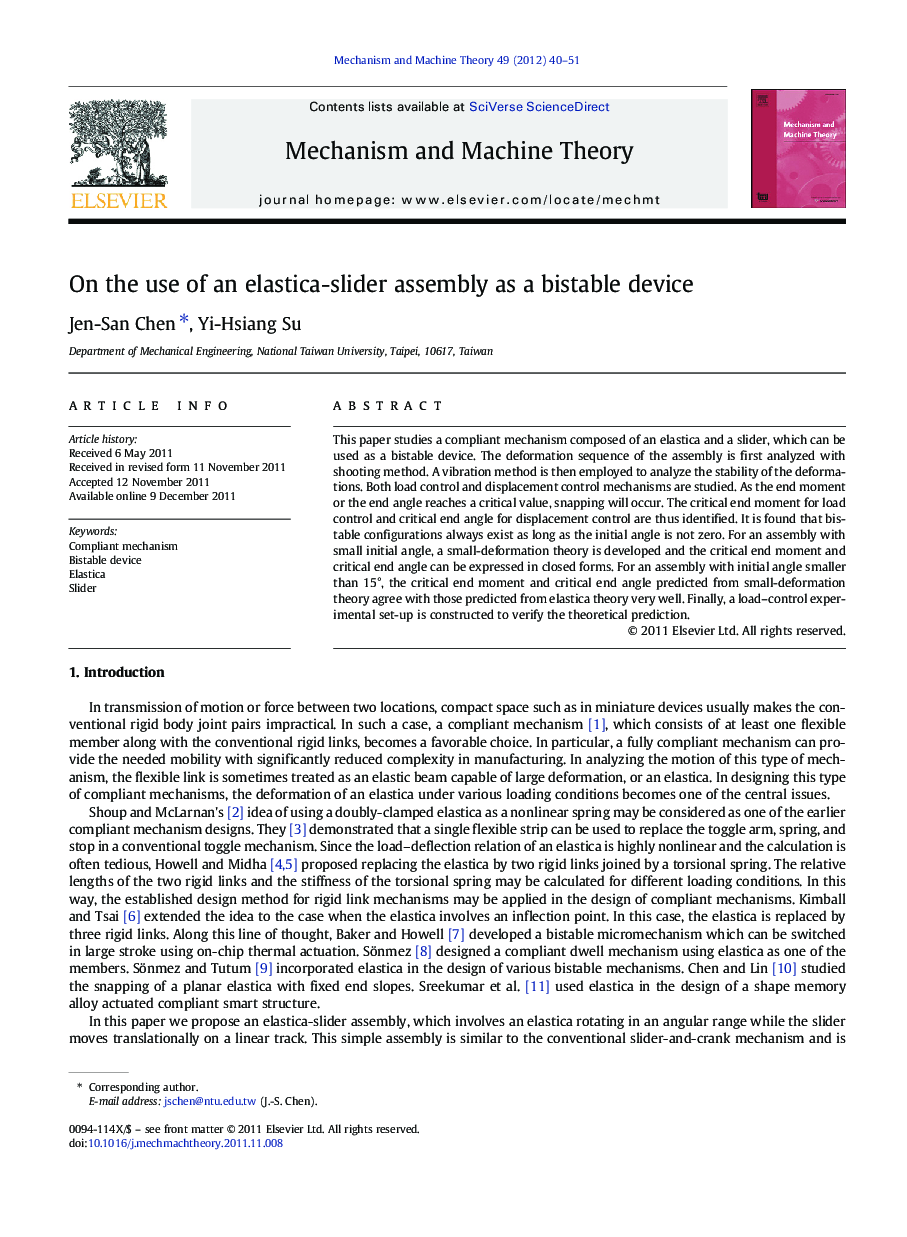| Article ID | Journal | Published Year | Pages | File Type |
|---|---|---|---|---|
| 802405 | Mechanism and Machine Theory | 2012 | 12 Pages |
This paper studies a compliant mechanism composed of an elastica and a slider, which can be used as a bistable device. The deformation sequence of the assembly is first analyzed with shooting method. A vibration method is then employed to analyze the stability of the deformations. Both load control and displacement control mechanisms are studied. As the end moment or the end angle reaches a critical value, snapping will occur. The critical end moment for load control and critical end angle for displacement control are thus identified. It is found that bistable configurations always exist as long as the initial angle is not zero. For an assembly with small initial angle, a small-deformation theory is developed and the critical end moment and critical end angle can be expressed in closed forms. For an assembly with initial angle smaller than 15°, the critical end moment and critical end angle predicted from small-deformation theory agree with those predicted from elastica theory very well. Finally, a load–control experimental set-up is constructed to verify the theoretical prediction.
► Exact geometry is preserved in the static analysis. ► Stability of the equilibrium configuration is determined with vibration method. ► The critical moment and critical angle can be derived in closed forms. ► Experiments are conducted to confirm the theoretical predictions.
